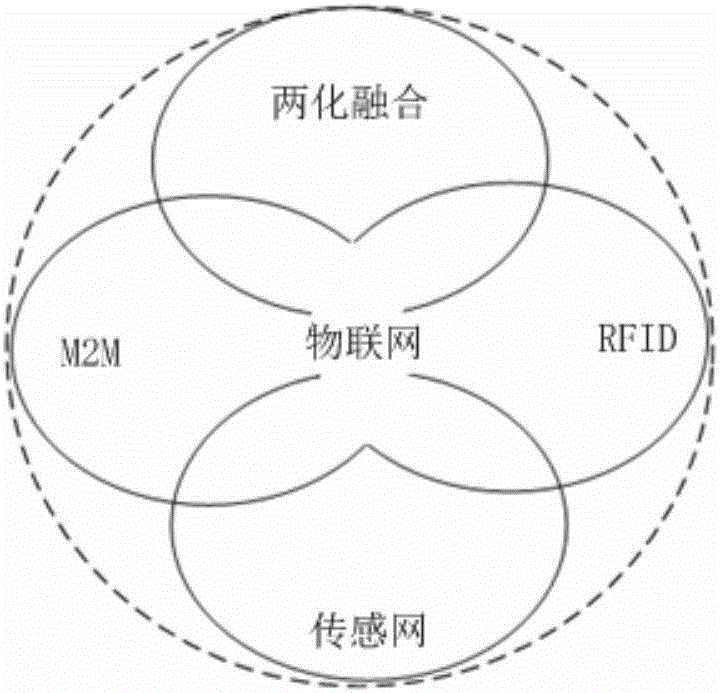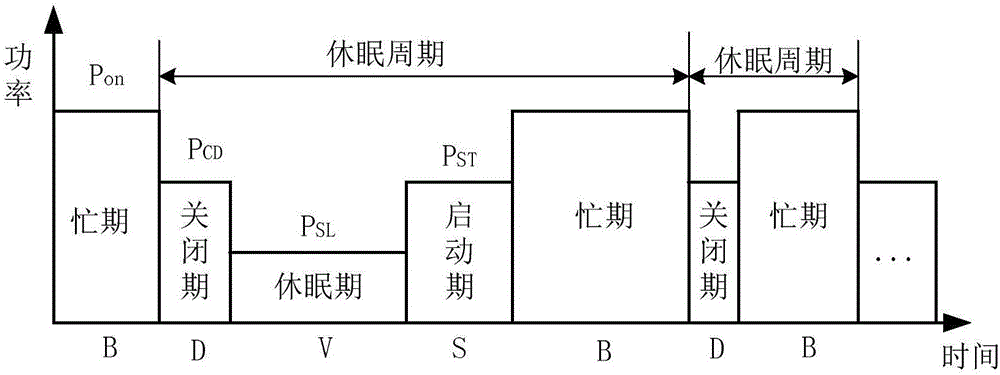N policy-based Internet of things cooperation node power control method
A cooperative node and power control technology, applied in the field of Internet of Things, can solve the problems of increasing node delay sleep, node delay start, not fully considering node sleep and business performance improvement, node delay sleep, etc.
- Summary
- Abstract
- Description
- Claims
- Application Information
AI Technical Summary
Problems solved by technology
Method used
Image
Examples
Embodiment 1
[0077] Step 1: cooperative node service queuing model;
[0078] The present invention is aimed at a special application scene, comes from practical application, and the scene setting is meticulous and reasonable, and has practical guiding significance. Such as figure 1 As shown, in the existing Internet of Things, due to the deployment of a large number of nodes, a large amount of data needs to be transmitted. Due to the low energy consumption of the nodes themselves, the data often cannot be transmitted in a point-to-point manner. With the rapid increase of data volume, the energy consumption of cooperative nodes has attracted more and more attention. Among them, the sleep strategy is a very important means for cooperative nodes to reduce energy consumption. Considering that the business load in the Internet of Things fluctuates approximately according to daily and weekly changes and obeys certain rules, we consider introducing queuing theory, and shutting down cooperative n...
Embodiment 2
[0117] The present invention further improves on the basis of Embodiment 1, and improves the solution efficiency of the optimization problem P1. The present invention proposes a new idea of solving the optimization problem P1, and adopts the Lagrangian multiplier method to search for optimization, and the speed is faster. Faster and less algorithmic complexity. Specifically, the solution of the optimization problem P1 can adopt the Lagrangian factor method:
[0118]
[0119] Reunited And use the subgradient method to solve it iteratively, where β represents the Lagrangian factor.
[0120] On the basis of using the Lagrange multiplier algorithm, we can use the subgradient method in each iteration of the cycle, and choose a gradual step length to make the optimization more accurate. Specifically, the iterative update method of the Lagrangian factor β in the Lagrangian form of the optimization problem P1 adopts a subgradient algorithm, which has lower complexity and is mo...
Embodiment 3
[0125] Embodiment 1 and Embodiment 2 solve the optimization problem P1, and the optimized variable is the average arrival number K of data packets in a vacation period V and the average energy consumption over a vacation period Then, in order to further guide the engineering practice and better control the energy-saving control parameters of collaborative nodes, we need to dig deeper into other control parameters and try to simplify the calculation amount of the optimal algorithm.
[0126] Next, we analyze formula (6) again, and notice that there is an important parameter K in the average stay time T V , in-depth research found that we can obtain the average arrival number K of data packets in a vacation period V The Z-transform of
[0127]
[0128] in, The superscript N of represents the N-strategy hibernation strategy of the present invention. It is important to note that, given the distribution of start-up and rest periods, D * (λ) determines directly Therefor...
PUM
 Login to View More
Login to View More Abstract
Description
Claims
Application Information
 Login to View More
Login to View More - R&D
- Intellectual Property
- Life Sciences
- Materials
- Tech Scout
- Unparalleled Data Quality
- Higher Quality Content
- 60% Fewer Hallucinations
Browse by: Latest US Patents, China's latest patents, Technical Efficacy Thesaurus, Application Domain, Technology Topic, Popular Technical Reports.
© 2025 PatSnap. All rights reserved.Legal|Privacy policy|Modern Slavery Act Transparency Statement|Sitemap|About US| Contact US: help@patsnap.com



